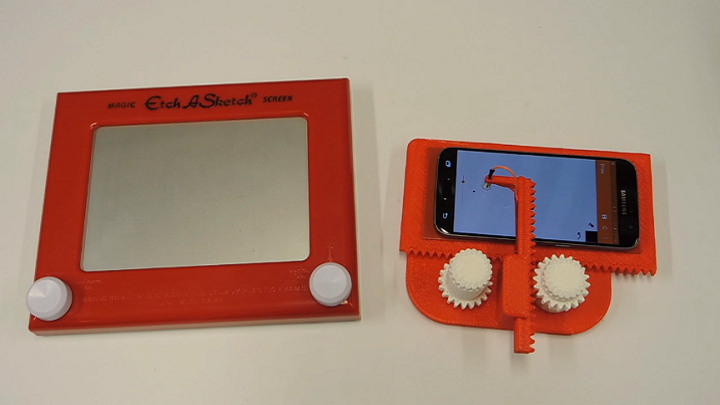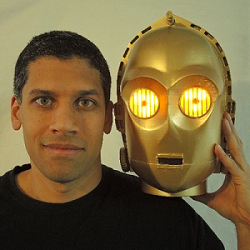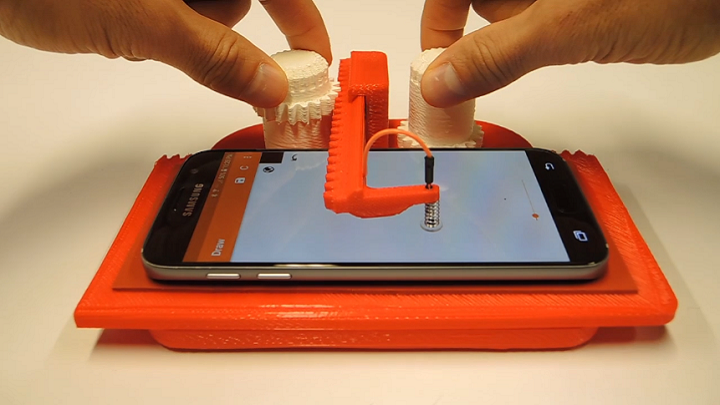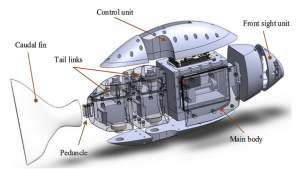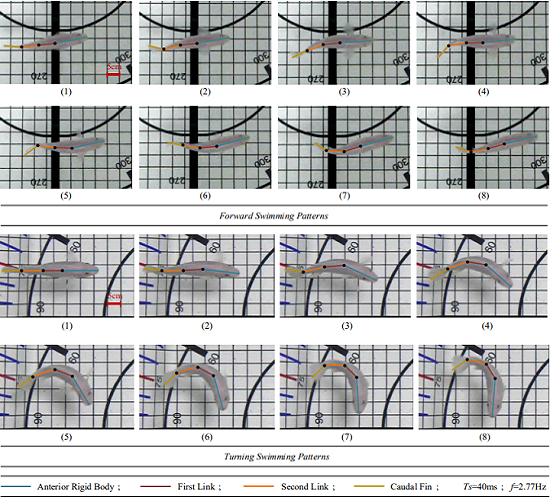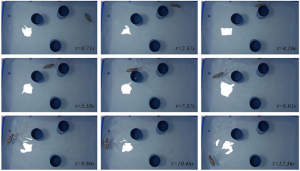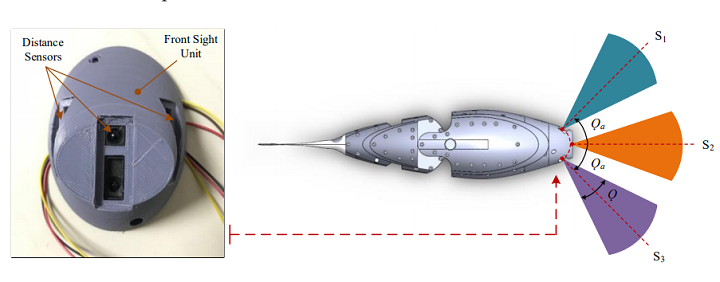RIZE partners with SOLIDWORKS reseller Instadesign Group
Demystifying STEM with SOLIDWORKS Apps for Kids
Let’s face it: sometimes, getting kids into STEM is hard. You can preach the gospel of science, technology, engineering, and math all day long, you can try to catch their attention with all sorts of pop culture models, you can show off the latest and greatest 3D printers. But if a kid feels like their creativity and imagination are being stifled by rules and numbers, “STEM” can quickly turn into “STOP.” SOLIDWORKS Apps for Kids was created with this in mind. It was designed with the mission to inspire all kids, from the budding artists to the youngest of engineers, to bring their wildest ideas to life.
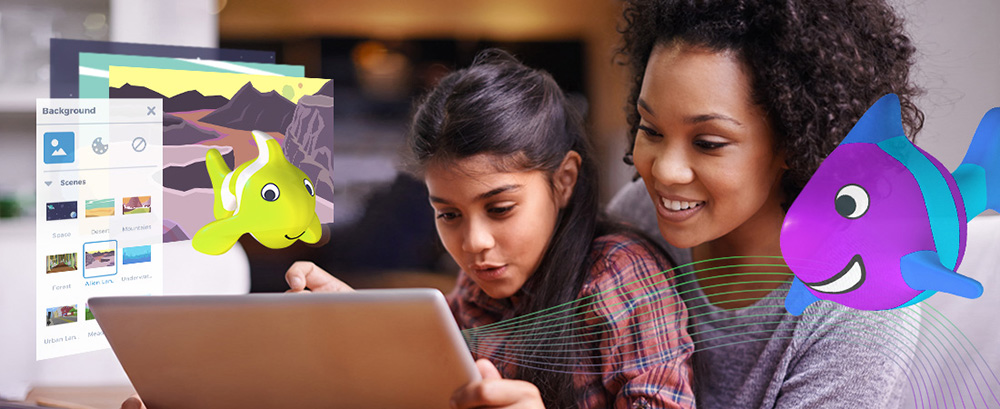
SOLIDWORKS Apps for Kids is an ecosystem of apps meant to nurture new designers from age 4 and up. With Capture It, Shape It, Mech It, Style It, and Print It apps, kids are introduced to real-world workflow practices like ideation, creation, enhancement, and production in a fun and accessible way. The apps empower kids to learn while allowing their creativity to flow, giving them multiple methods to design and turn their craziest ideas into reality.
Capture It is a personal inspiration app, where kids can add photos, draw their own images and turn them into stickers, and create an idea board for all the designs that will come next.
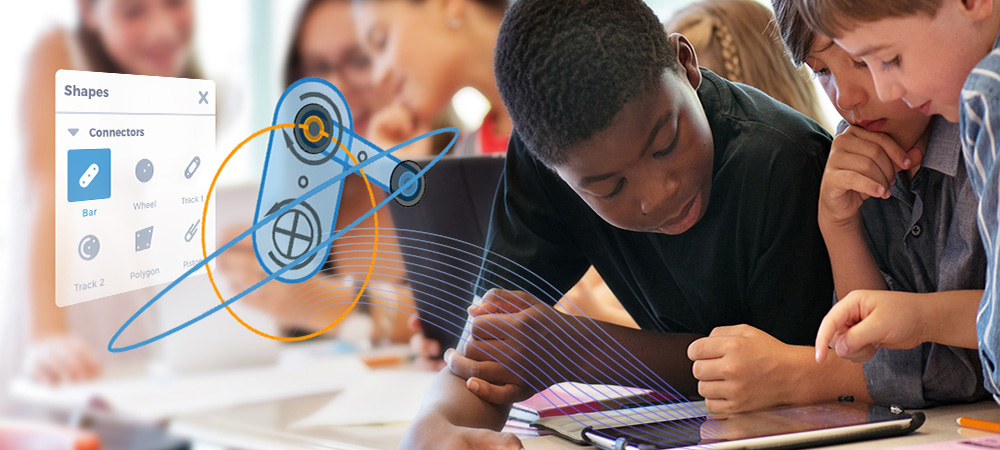
Anyone who is familiar with 3D modeling will recognize Shape It, a kid-friendly, easy to use CAD app that allows kids to shape, prod, and pull material into their very own creations.
Is your kid more interested in motors and linkages? With the Mech It app, moving machinery is in within arm’s reach, with cool and colorful spiral designs that kids can tweak in any which way they like.
Two kids might create similar models, but with the Style It app they can really make their own designs pop. Using colors, stickers, backgrounds, and more, once models created in the Shape It app are opened in Style It, they can be decorated and made truly unique.
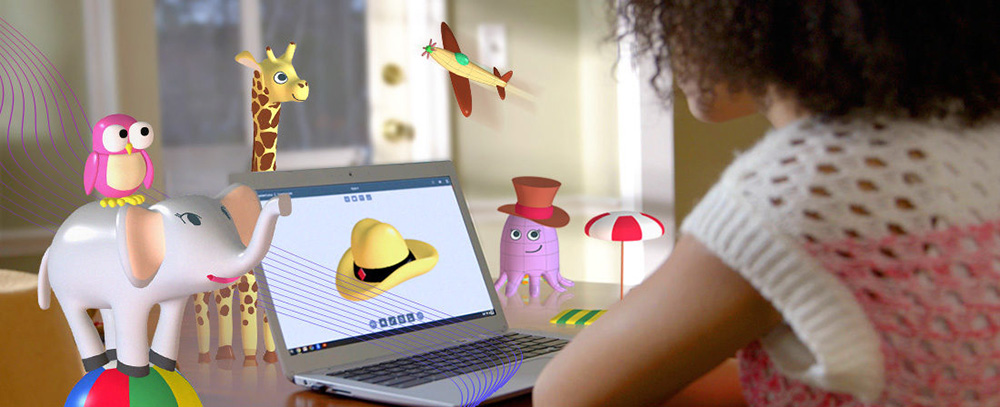
With the Print It app, kids can watch their designs come to life. Print It gives kids the ability to 2D print or 3D print their designs, and also allows them to learn about isometric views in a cool way with the Cube Print function.
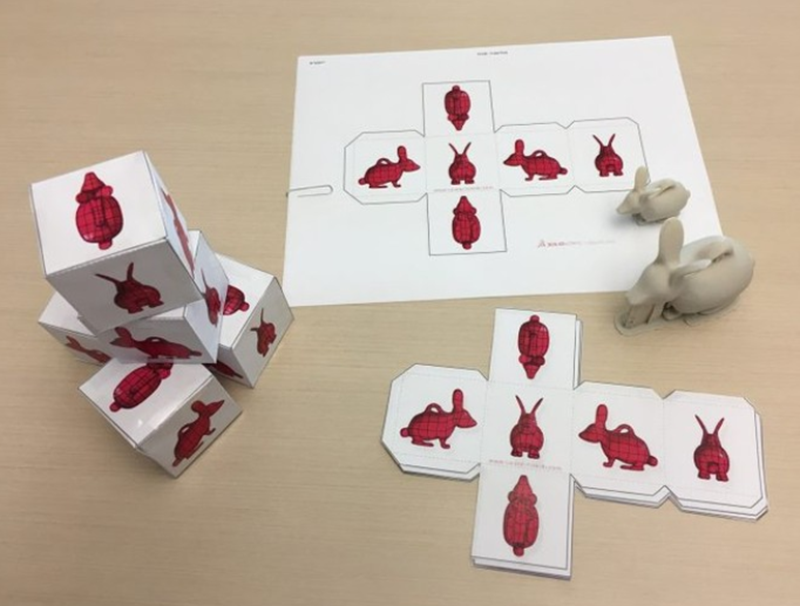
Projects in SOLIDWORKS Apps for Kids are always private until you decide to share it to the Apps for Kids Public Gallery. Users can “riff” on public projects—your kid might see a cutesy bunny design, like it, then riff on that project and transform that bunny into an out-of-this-world alien. Creativity, imagination, and community are all part of the Apps for Kids ecosystem.
Educators across the country have embraced SOLIDWORKS Apps for Kids as a means to teach their students about design and engineering. Now, the Apps for Kids Classroom interface allows teachers to create and organize self-contained workshops.
Getting kids into STEM can be tough, but it doesn’t have to be. If you give kids the means to express and create, to engineer and tinker to their heart’s content, they can learn that STEM exists beyond numbers and rules. With SOLIDWORKS Apps for Kids, they are already there. Learn more about all the fun things you can do with SOLIDWORKS Apps for Kids right here.
Maker Uses 3D Printing to Turn Cell Phone into Modern Etch-a-Sketch
If you haven’t gotten so frustrated with your terrible attempt at an Etch-a-Sketch drawing that you’ve had to resist the overwhelming urge to fling the toy across the room, have you even really lived at all? Invented in the 1950s by Andre Cassagnes, the popular red-framed drawing device uses an internal stylus, directed by those round white knobs on the bottom two corners, to move gray aluminum powder around into artwork, or at least something like it.
Like so many other classic items, the Etch-a-Sketch has received new life before through the use of 3D printing. Recently, maker Ali of the Potent Printables YouTube Channel turned to the technology to update the Etch-a-Sketch toy once again.
“Thought you might be interested in something I designed- it is a 3D printed device that lets you temporarily turn your cell phone into an Etch-A-Sketch,” Ali told 3DPrint.com.
Ali recently began a new YouTube series called “Old and New,” which looks at older mechanisms and designs. Then, Ali will use 3D printing to recreate or re-imagine the item. The Etch-a-Sketch is the subject of his first episode, and Ali starts off by paying his respects to the original toy.
“Erasing the etched image is done by shaking the Etch-a-Sketch,” he explains in the video. “Remember those beads that were mixed in with the aluminum powder? Those help to smooth out and redistribute the powder across the glass, which resets the drawing area.”
Moving on to his more modern version, Ali explains that he designed the Cell Phone Etch-a-Sketch in SOLIDWORKS, and then printed it out of PLA on his LulzBot TAZ 6 3D printer. He included the STL files on both Thingiverse and MyMiniFactory for those who want to try making their own version. In addition, he’s put together a kit of all the necessary supplies for the project beyond the 3D printed parts, which is available for purchase on his Etsy shop. These supplies include:
- conductive stylus
- jumper wire
- silicone sheet
- pen springs
- JB Kwik 2-part epoxy
- wrist strap
“Please note that I found differences in touchscreens sensing the stylus, especially between Android and Apple cell phones,” Ali wrote on MyMiniFactory. “Apple devices require the stylus to be electrically tied back to the user.
“However, I haven’t done extensive testing on different Android phone manufacturers, so if you want to guarantee this will work, also buy the wrist strap.”
 Some of the benefits Ali noted from using a cell phone as an Etch-a-Sketch include adjusting the pointer size, being able to lift the stylus off of the screen to move it somewhere else, erasing selected areas, drawing in different colors, and the ability to save your sketches, which “makes making mistakes less deadly.”
Some of the benefits Ali noted from using a cell phone as an Etch-a-Sketch include adjusting the pointer size, being able to lift the stylus off of the screen to move it somewhere else, erasing selected areas, drawing in different colors, and the ability to save your sketches, which “makes making mistakes less deadly.”
Ali explains in the video how the device actually works, noting that the actual cell phone is held on a platform which moves in one direction, thanks to a rack and pinion mechanism.
“A conductive stylus is mounted in another rack and pinion mechanism, which moves in the other direction,” he explained. “This stylus is spring-loaded and can move up and down to accommodate the different heights of various phone types.”
According to Ali, his project is getting a pretty good response – the short video of the cell phone Etch-a-Sketch he posted to Twitter has already received over 8,500 views. On Reddit, the video has been viewed 32.3k times and has received 2,400 upvotes.
“There are some downsides to this current design, which are mostly due to making it as 3D printer-friendly as possible,” Ali noted in the video. “The controls are not as accurate or smooth as a classic version, and the stylus tip partially obscures the drawing area.”
In addition, a few people on Reddit took issue with the various axes on the device. User hollaverga said they’d need to modify the design to add an idler gear to invert the X axis, while crua9 suggested a third knob to provide the device with a Z axis. Super_Dork_42 said the entire thing could be entirely 3D printed if one used a conductive filament, which Ali was all for, saying that it was “a really good suggestion.” This is what’s so great about the maker community – no one’s feelings are getting hurt if another person suggests something to make a design even better than the original version.
“If you are planning on printing and building one of these, please read the assembly guide that I have included,” Ali cautioned.
“If you do print one, please share pictures with me on social media.”
Will you try and make your own Cell Phone Etch-a-Sketch? Let us know! Discuss this and other 3D printing topics at 3DPrintBoard.com or share your thoughts in the comments below.
Researchers Use Biomimicry and 3D Printing to Develop Robotic Fish
3D printed robotic fish have all sorts of applications, from underwater data acquisition and detecting toxins in the water to studying and saving real fish, or just adding a new pet to the family. A group of engineering researchers from the University of Firat in Turkey are using biomimetic design to come up with flexible solutions for different marine applications, like observing organisms, examining underwater resources, finding and combating pollution, coastline security, surveying submerged areas, and fault detection in pipelines.
The researchers, inspired by the carp fish for their 3D printed robotic fish, recently published a paper, titled “Mechatronic Design and Manufacturing of the Intelligent Robotic Fish for Bio-Inspired Swimming Modes,” about their use of 3D printing, robotics, and biomimicry to develop an Autonomous Underwater Vehicle (AUV).
The abstract reads, “This paper presents mechatronic design and manufacturing of a biomimetic Carangiform-type autonomous robotic fish prototype (i-RoF) with two-link propulsive tail mechanism. For the design procedure, a multi-link biomimetic approach, which uses the physical characteristics of a real carp fish as its size and structure, is adapted. Appropriate body rate is determined according to swimming modes and tail oscillations of the carp. The prototype is composed of three main parts: an anterior rigid body, two-link propulsive tail mechanism, and flexible caudal fin. Prototype parts are produced with 3D-printing technology. In order to mimic fish-like robust swimming gaits, a biomimetic locomotion control structure based on Central Pattern Generator (CPG) is proposed. The designed unidirectional chained CPG network is inspired by the neural spinal cord of Lamprey, and it generates stable rhythmic oscillatory patterns. Also, a Center of Gravity (CoG) control mechanism is designed and located in the anterior rigid body to ensure three-dimensional swimming ability. With the help of this design, the characteristics of the robotic fish are performed with forward, turning, up-down and autonomous swimming motions in the experimental pool. Maximum forward speed of the robotic fish can reach 0.8516 BLs-1 and excellent three-dimensional swimming performance is obtained.”
Two of the most important things to consider when designing a 3D printable, biomimetic robotic fish are its body structure and swimming modes, so the researchers spent a lot of time observing and examining fish to get the design right. According to the paper, over 85% of fish swim by bending their bodies and/or caudal fins, also known as BCF, while the rest swim with their median and/or pectoral fins (MPF).
“There are two basic approaches in robotic fish design. First is the biomimetic design which has certain requirements such as a tail with the size and number of joints to provide body travelling wave, and the ability to stay at a certain depth with the control of the center of gravity,” the researchers wrote. “The second design approach uses only the movement effects of fish, but it is not physically inspired by real fish.”
Bio-inspired robotic fish use oscillatory and/or undulatory body motions. The University of Firat team’s robotic fish prototype replicates BCF-type Carangiform swimming modes with its propulsive, servo motor-driven tail mechanism; it also features anterior, rigid, torpedo-shaped body to hold all of the sensors and electronics, along with the Center of Gravity (CoG) control mechanism for moving up and down.
The 3D models of the robotic fish were first designed in SOLIDWORKS and then transferred to Voxelizer, before being 3D printed with PLA material, though the flexible caudal fin was made with a silicone mold. Epoxy resin was used to cover each part in order to prevent possible micro pore leakage, and after the robotic fish was assembled, its surface was covered with synthetic paint to prevent leaks caused by capillary cracks.
Because robotic fish need to be able to perceive static and dynamic objects in their environment while they swim around, the team added three Sharp infrared distance sensors to their fish, which weights roughly 3.1 kg and is about 500 mm long, 76 mm wide, and 215 mm high. A two-link tail mechanism provides the necessary thrust for the fish to move.
“This study presents the biomimetic design and manufacturing of the intelligent robotic fish prototype (i-RoF) based on bio-inspired swimming to perform real-world exploration and survey missions,” the researchers concluded. “The robotic fish prototype for three-dimensional motion abilities is investigated in the real experimental system. In these analyses, more than 72 different experimental studies were performed to obtain the characteristics of the prototype.
“In order to test the sealing performance of the mounted parts, they run during 6 hours in a water-filled test pool. The success of sealing tests is observed.”
Future research could center around examining the 3D printed robotic fish prototype’s closed-loop control performances using different control structures, as well as testing its swimming ability in different watercourses.
Co-authors of the paper include Mustafa Ay, Deniz Korkmaz, Gonca Ozmen Koca, Cafer Bal, Zuhtu Hakan Akpolat, and Mustafa Can Bingol.
Discuss this story and other 3D printing topics at 3DPrintBoard.com or share your thoughts in the comments below.
3D Printing in Architecture, Engineering, Product Design: 3D Hubs Announces 2018 Student Grant Winners
 Last year, 3D Hubs, the world’s largest online network of 3D printing services, reported that nearly 500 applicants from 300 universities around the world applied for its extremely popular Student Grant program, which encourages students to make a positive influence on the world by using 3D printing in a creative way.
Last year, 3D Hubs, the world’s largest online network of 3D printing services, reported that nearly 500 applicants from 300 universities around the world applied for its extremely popular Student Grant program, which encourages students to make a positive influence on the world by using 3D printing in a creative way.
Just a few months ago, 3D Hubs announced that it would be kicking off its Student Grant program for the second year in a row, and offering grants to students who were able to illustrate the best use of 3D printing in the architecture, engineering, and product design fields. The grant amount was increased this year from $500 to $1,000, to be used for project expenses and continued funding. Unsurprisingly, the reception for the grant program was great once again.
“We’ve had some amazingly innovative applicants from around the world using 3D printing for some unique applications,” George Fisher-Wilson, the Communications Manager for 3D Hubs, told 3DPrint.com.
 There were applicants from more than 50 countries this time around, entering a wide array of innovative 3D printed projects that, as Fisher-Wilson told us, were diverse, including “underwater jetpacks, prosthetics for mountain biking and a 3D printed head with sensors used as a training device for robotic surgery.”
There were applicants from more than 50 countries this time around, entering a wide array of innovative 3D printed projects that, as Fisher-Wilson told us, were diverse, including “underwater jetpacks, prosthetics for mountain biking and a 3D printed head with sensors used as a training device for robotic surgery.”
Today, 3D Hubs has announced the three awardees for this year’s 3D Hubs Student Grant program, who were chosen based on the core concept, impact, and functionality of their projects, along with how creatively 3D printing was used to make their ideas a reality. 44.6% of all entries this year were for the Product Design category, followed up by 27.5% for Architecture and 25.9% for Engineering. For the second year in a row, Loughborough University in the UK had the most entries, while New York’s Pratt Institute came in second and the Politecnico di Milano in Italy was third.
“After the success of last year it was great to see more refreshing and new ideas being submitted,” said Filemon Schoffer, the CMO of 3D Hubs. “Our goal is to give students affordable access to all manufacturing technologies so [their] ideas don’t have to be restrictive. The 3D Hubs Student Grant is always a great way to showcase the talented people we having using the platform who will be pushing the industry forward.”
The winners of this year’s Architecture category were Benedikt Boschert and Miriam Boldt from Hochschule Koblenz in Rhineland-Palatinate, with their 3D printed model of a public swimming pool. Their particular project turned the old culture of bathing on its head and into a new, more modern concept.
“With the background of a real task for our city, this concept is weaving the conditions to [an] optimal design of contemporary public swimming pools,” explained Boschert and Boldt in their project description.”
The students 3D printed over 25 pieces for the swimming pool model with an FDM 3D printer, then bonded them together, which helped them turn their original design into a physical model.
Rory Geoghegan and Dr. Mendelsohn from UCLA, who are in the bioengineering and biomedical engineering field, were awarded the 3D Hubs grant in the Engineering category for their Training Platform for Transoral Robotic Surgery.
Using an FDM 3D printer and PLA materials, the two created a 3D printed model of a human head, which also includes a synthetic oral tumor and an anatomically accurate aerodigestive tract, to be used as a training platform.
“Robotic surgery can be used to remove tumors from deep inside the mouth,” Dr. Mendelsohn and Geoghegan explained. “Currently there is no training platform to facilitate the necessary skills acquisition for surgical residents.”
The model is cost-effective, which is good if replacement parts are needed quickly during training, and also includes force sensors underneath the structures that are most often damaged by new surgeons, such as the lips and teeth.
Archie O’Brien from Loughborough University was awarded the final 3D Hubs grant, in Product Design, for his 3D printed, underwater jet pack. He calls his project, named Cuda, the “fastest underwater jetpack” in the world, and says it can be used for multiple purposes, such as underwater exploration, lifeguard duties, “and of course fun.”
The functional 3D printed prototype, designed in SOLIDWORKS, shows what O’Brien calls a “complex use of 3D printing,” as the prototype and most of its internal components were 3D printed using mostly PLA.
During this year’s program, 3D Hubs also took a close look at the most commonly used 3D modeling software – SOLIDWORKS was at the top, with Rhino following closely behind – and the most popular materials (PLA was the clear winner) used by students for their projects.
To take a look at the rest of these findings, and all of the top ten finalists in each of the three award categories, check out the 3D Hubs blog post. While dates and categories won’t be confirmed until later this year, the 3D Hubs Student Grant, open to all registered students, will definitely be returning for a third iteration in 2019.
Discuss this story, and other 3D printing topics, at 3DPrintBoard.com, or share your thoughts in the Facebook comments below.
[Images provided by 3D Hubs]

